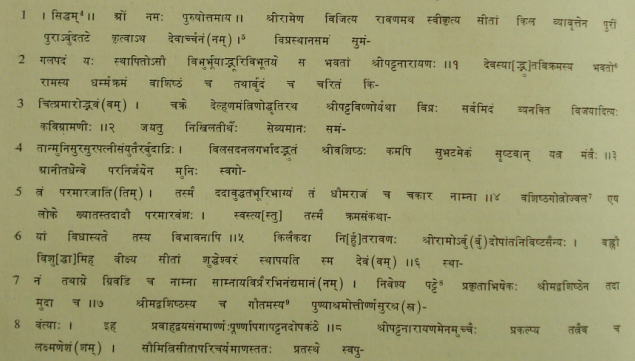|
The Indian Analyst
|
North Indian Inscriptions |
INSCRIPTIONS OF THE PARAMARAS OF CHANDRAVATI confluencing with each other at that place. They are also mentioned as Gaṅgā-dvaya, in 1. 9. Rōhēḍā, the place of the residence of the engraver (1. 33), is the principal town of the tehsīl of the same name in the Sirōhī District, and is about six kilometers distant from the Rōhērā Road station on the Rājputānā-Mālwā Railway line. [1] All the other places where donations were made, as recorded in 11. 36-38, can be located in the modern Ābū Road tehsīl of the Sirōhī District and in the neighbourhood of the find-spot of the inacripiton. [2] Thus, Chhanār is the modern village of the same name (56), about 14 kms. west-south-west of Ābū Road ; Shīmāulī appears to be the same as Māval (63), situated about 10 kms. south by west of Ābū Road ; and Āüli, is obviously the modern village Awāl (54), at almost the same distance and in the same direction from Ābū Road. Maḍāūlī appears to be identical with Moordala (13), about 10 kms. north-northwest of Ābū Road; and Chandrāvatī, which still retains its old name, lies about 8 kms. south-west of Ābū Road (66), as we have so often seen. The only place mentioned by the name Kālhaṇavāḍa in 1. 37, cannot be definitely identified; but it may perhaps have been the same as Kṛishṇaganj (82), as suggested by the name. It lies in the adjacent tehsīl of Sirōhī itself, and almost at the same distance north by east of Ābū Road. TEXT
[3]
[1] It is about kms. south-southwest of Piṇḍwāḍa and included in the tehsīl of the same name. Also spelt as Rōhidā. For a copper-plate inscription from the same place, see above, No. 76.
..................CORPUS INSCRIPTIONUM INDICARUM
|
||||||||||||||||||||||||||||||||||||||||||||||||||||||||||||||||||||||||||||||||||||
| > |
|
>
|









